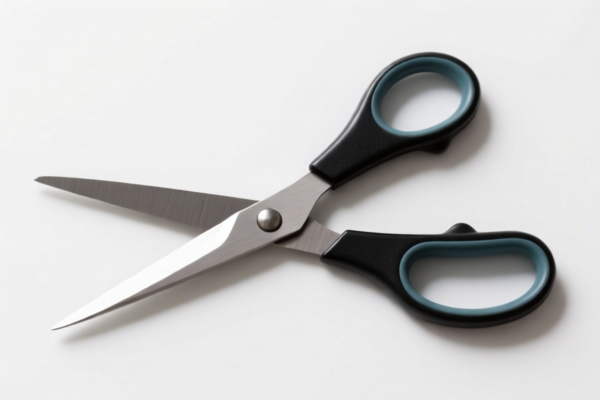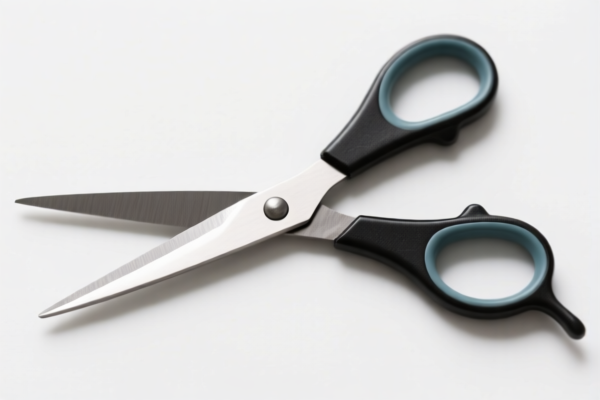| HS Code | Official Doc | Tariff Rate | Origin | Destination | Effective Date |
|---|---|---|---|---|---|
| 8213003000 | Doc | 1.7¢ each + 4.3%+30.0% | CN | US | 2025-05-12 |
| 8213009000 | Doc | 3¢ each + 3%+30.0% | CN | US | 2025-05-12 |
| 8208906000 | Doc | 55.0% | CN | US | 2025-05-12 |
| 8208903000 | Doc | 55.0% | CN | US | 2025-05-12 |
| 8301406060 | Doc | 43.2% | CN | US | 2025-05-12 |
| 9601908000 | Doc | 41.2% | CN | US | 2025-05-12 |
| 3503005550 | Doc | 2.8¢/kg + 3.8%+37.5% | CN | US | 2025-05-12 |




Trim Scissors
Trim scissors, also known as thinning shears or texturizing scissors, are specialized cutting tools used in hairdressing, pet grooming, and crafting to reduce the volume and texture of hair or other materials. Unlike standard scissors which cut hair bluntly, trim scissors remove a portion of the hair with each cut, creating a softer, more layered effect.
Material
The blades of trim scissors are typically made from high-quality stainless steel, known for its durability, corrosion resistance, and ability to hold a sharp edge. Higher-end models utilize Japanese steel (e.g., 440C, VG-10) for superior sharpness and longevity. Handles are often constructed from stainless steel as well, though plastic or ergonomic materials are sometimes used for comfort.
Purpose
The primary purpose of trim scissors is texturizing. This involves removing bulk from hair without significantly altering the overall length. They are used to:
- Create layers and movement.
- Reduce weight and volume.
- Blend layers for a more natural look.
- Create a softer, more feathered edge.
- Remove knots and tangles in pet grooming.
Function
Trim scissors function by utilizing a series of notches or teeth along one or both blades. These teeth remove a percentage of the hair as the blades close. The number and size of the teeth determine the amount of hair removed with each cut:
- More teeth = less hair removed (finer texturizing)
- Fewer teeth = more hair removed (coarser texturizing)
The blades are designed with a specific angle to ensure clean cuts and prevent damage to the hair. Precision manufacturing is crucial for smooth operation and consistent results.
Usage Scenarios
- Hairdressing: Creating layered haircuts, removing bulk from thick hair, blending layers, texturizing ends, creating soft fringes.
- Pet Grooming: Thinning thick coats, removing mats and tangles, shaping and contouring fur, creating a more natural appearance.
- Crafting: Texturizing fabric, trimming edges of delicate materials, creating fringe effects.
- Barbering: Blending and texturizing hair for various styles.
Common Types
- Standard Thinning Shears: Have teeth on both blades, removing hair from both sides of the cut. Most versatile type.
- Texturizing Shears: Typically have teeth on only one blade, creating a more dramatic texturizing effect.
- Blending Shears: Feature fewer teeth and wider spacing, ideal for blending layers and softening lines.
- Chunking Shears: Have very few teeth (often 3-5) and remove a significant amount of hair, used for creating bold texture.
- Swivel Shears: Feature a rotating thumb ring, reducing strain on the hand during extended use.
- Left-Handed Shears: Designed specifically for left-handed users.
Trim scissors fall under several potential classifications based on their characteristics and value. Here's a breakdown of relevant HS codes:
-
8213003000: This code covers scissors, tailors' shears, and similar shears, and blades and other base metal parts thereof, specifically those valued not over $1.75/dozen. This is applicable if the scissors are standard trim scissors and their value does not exceed this threshold.
- 82: Chapter 82 pertains to knives and cutting implements.
- 13: Heading 13 specifically covers scissors, tailors' shears, and similar shears.
- 003000: This subheading further defines the classification as those valued not over $1.75/dozen.
-
8213009000: This code also covers scissors, tailors' shears, and similar shears, and blades and other base metal parts thereof, but for those valued over $1.75/dozen, or other parts. If the scissors are higher-value or include parts, this code is applicable.
- 82: Chapter 82 pertains to knives and cutting implements.
- 13: Heading 13 specifically covers scissors, tailors' shears, and similar shears.
- 009000: This subheading further defines the classification as those valued over $1.75/dozen or other parts.
Regarding these HS codes, please note the following tariff details:
- For 8213003000: The base duty is 1.7¢ each + 4.3%. A 30.0% additional duty applies from April 2, 2025. The total tariff rate is 1.7¢ each + 4.3% + 30.0%.
- For 8213009000: The base duty is 3¢ each + 3%. A 30.0% additional duty applies from April 2, 2025. The total tariff rate is 3¢ each + 3% + 30.0%.
It is important to accurately determine the value per dozen to select the correct HS code.
Customer Reviews
No reviews yet.